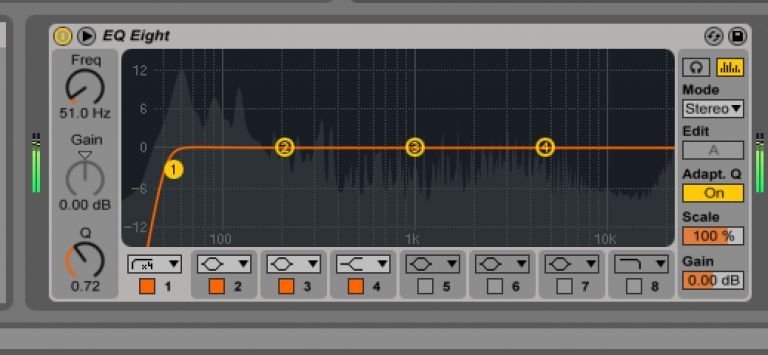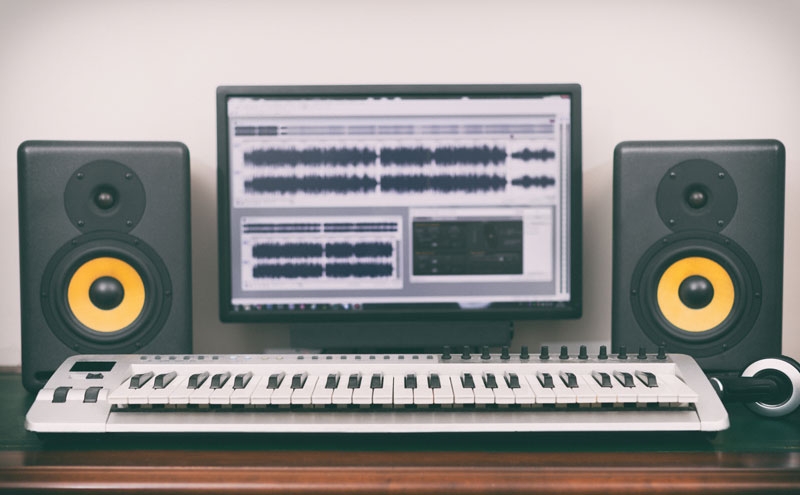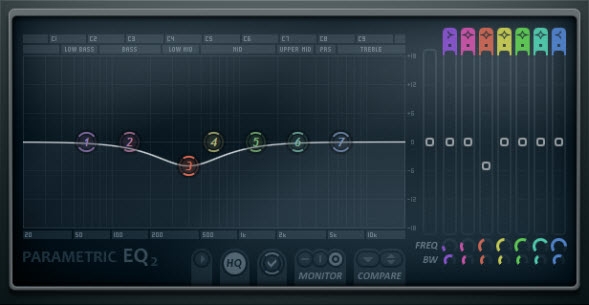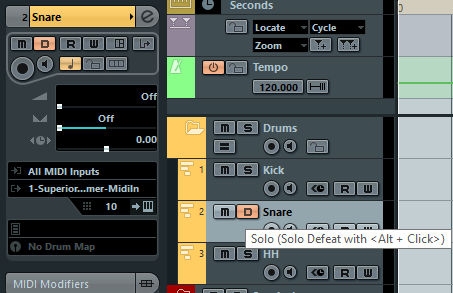 One of the most common struggles for home producers is getting your mix to sound clear instead of having a lot of "boomy" low end. This is usually due to poor monitoring and/or an untreated room, but can leave you feeling like you don't have the chops to get a great sounding recording from your home studio.
One of the most common struggles for home producers is getting your mix to sound clear instead of having a lot of "boomy" low end. This is usually due to poor monitoring and/or an untreated room, but can leave you feeling like you don't have the chops to get a great sounding recording from your home studio.
There's a lot to be said for having a well treated room, great monitors and a subwoofer, but that can get really expensive. The good news is there are a few things you can do to clean up your mixes without needing to shell our the cash for all new gear or room treatment.
The first thing you can try to clean up your mix is to apply a highpass filter on the sub bass frequencies on the master bus. This is anything under about 50Hz. The highpass filter will cut all frequencies below 50Hz and get rid of that rumbling sound that could be dominating your mix. If your mix relies on sub frequencies (as is common in hip hop) be careful cutting too much sub bass out of your mix or you could end up with a mix that sounds flat and tiny with no punch.
 When you setup your monitors, you may have pulled them out from the wall and setup one speaker on each side of your workspace. This is generally a good recommendation as walls and corners can amplify the bass frequencies you hear when monitoring and cause you to make bad decisions in your mix based on poor monitoring conditions.
When you setup your monitors, you may have pulled them out from the wall and setup one speaker on each side of your workspace. This is generally a good recommendation as walls and corners can amplify the bass frequencies you hear when monitoring and cause you to make bad decisions in your mix based on poor monitoring conditions.
If you don't have a sub, though, you probably aren't hearing a lot of the lower frequencies in your mix, so pushing your monitors back against a wall will amplify the lower frequencies allowing you to make adjustments accordingly. This isn't a perfect solution, of course, but can help you to cut a lot of the mud out while still in the control room.
 Probably one of the most common sources of muddy sounding mixes is the 200-400Hz range. Use your EQ to cut frequencies around 200-400Hz on each individual track (not your whole mix unless you are still getting mud after going track by track).
Probably one of the most common sources of muddy sounding mixes is the 200-400Hz range. Use your EQ to cut frequencies around 200-400Hz on each individual track (not your whole mix unless you are still getting mud after going track by track).
The reason this range can get so troublesome is that many instruments have a boomy fullness attributed to these frequencies and can often compete in your mix. A male vocal, for instance, may have boominess around 240Hz, which gets muddled up in the body of the acoustic guitar track. Cutting the vocal around 240Hz will free up space for the acoustic guitar and clear things up a bit.
 When you EQ your tracks, it helps if you solo them first. This helps to reduce your distractions from frequencies in other tracks and allows you to get the best EQ on each individual track before trying to fit them all together.
When you EQ your tracks, it helps if you solo them first. This helps to reduce your distractions from frequencies in other tracks and allows you to get the best EQ on each individual track before trying to fit them all together.
Once you've soloed a track, identify the frequencies you don't like and reduce them. Using subtractive EQ instead of boosting the other frequencies allows you to make changes just to the frequencies you hate without affecting the rest of the spectrum.
Of course you know you should listen to your mix on as many different audio systems and speaker combinations as possible, but this is especially true if you don't have the best space for monitoring in your studio.
 Most consumer systems (which is what most people will use to playback your music) have EQs built into them that boost the low end to provide for a fuller sound when played back. This can be detrimental to your mixes if you are struggling with a boomy low end. Consumer systems can actually boost the bass to the point where it takes over and is distracting to the rest of the track.
Most consumer systems (which is what most people will use to playback your music) have EQs built into them that boost the low end to provide for a fuller sound when played back. This can be detrimental to your mixes if you are struggling with a boomy low end. Consumer systems can actually boost the bass to the point where it takes over and is distracting to the rest of the track.
Even if it sounds great in your studio and your living room, go play it back in the car, in your friends car, etc. Boost the bass to the max on the stereo to hear what the worst case scenario could be and make notes. Do this several times before preparing your final mix for mastering and you'll get a much better idea of how your mix will sound to the end listener.